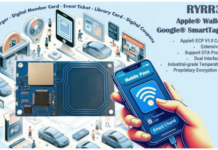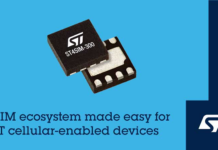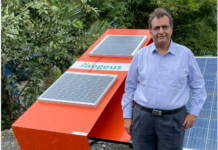
John lazily opened his eyes as the rain started.
The droplets pinged against the hydrophobic glass in the dark, as streetlights swept by overhead in a hypnotic warp drive. He wiped the sleep from his face and looked at the time. 3:47 a.m., which meant he had about an hour left.
He liked to take the Ford on his trips from New York to D.C., as it wasn’t terribly longer than a flight and he had a fear of flying. It was certainly faster to take the hyperloop, but there was something romantic about a car on the open road.
As a technology historian, it fascinated him that people once piloted these multi-ton vehicles without seatbelts, with nary a computer driving aid, never mind the full autonomy required on highways today.
“Show me something interesting,” he said aloud.
An article popped up titled Communication Sub-Ecosystems: A History. Sammy, his personal assistant AI, knew him well. But he wanted a bit lighter reading tonight. “Maybe something a little lighter, Sammy?” Another one appeared, this one titled A Look Back: IoT-For-All.com Predicts 2067 in 2017.
As he started to read the fifty-year-old article, the first line literally made him guffaw. The author, Jared Porcenaluk, wrote “The Internet of Things is shaping up to change our world in dramatic ways.”
“You don’t say,” thought John.
His gaze couldn’t help but be pulled to the window as floodlights lit up the scene outside. A giant construction site was floating by in the distance. He couldn’t make out the foremen, but he knew they were there. There would always be two or three people on the ground with yellow hats, pointing and pinching the sky, yelling at the automated machinery to fulfill the architect’s plans.
He remembered a time in his youth when there might be dozens of workers, now it was always two or three. Their hands rarely dirtied. Blueprints were automatically uploaded to the construction company, the trucks automatically deployed whatever materials and machinery were necessary, and self-aggrandizing foremen stood around and yelled at the automated forklifts and cranes. RFID tags in each piece of building material, incredibly accurate LIDAR, and of course the self-organizing machinery made the yelling redundant. Yet, they shouted.
As the construction site slid away from view, he went back to the article. Skipping a few paragraphs, he landed on a quote by someone interviewed within, Eric Conn. “Every human will be chipped. I believe either at birth or retroactively ending up getting chipped. Humans will become IoT sensors themselves.”
John looked at his fingers, each with a thin circle in the end. Apple Digits. They allowed him to feel the paper of this very article that floated holographically in front of his face, melding the virtual and physical worlds ever closer. Removable, yes, but you had to go to the Genius Bar to get it done. And if the rumors were true that Warm and Cold functionality was coming next year, John figured he’d want to upgrade.
As for the chip, no one called it that. Connected was the turn of phrase. John had got Connected with a Microsoft chip, but there was plenty of choice there. No one forced you to get Connected, but the convenience factor was well worth it.
There’s a commonly accepted phrase that was adopted in recent decades, Danish in origin. Være menneske means “be human,” and people have said it whenever new human-enhancement technology appeared. Culture shunned technology that put people in an uncanny valley. So, Apple Digits and Connected are in, brain-to-human interfaces are out. There were people who did it, of course. “Wire heads,” most people called them.
“Biology is easy. Psychology is hard,” John thought. Why did people still use record players? There’s no technological superiority there. Of course, John realized he could have taken the plane or hyperloop, so he let the thought rest and went back to reading.
“IoT security is never going away. Humans will still be humans, making mistakes. Quantum computing may be able to eventually crack current cryptography in milliseconds, but quantum cryptography can allow for new ways to secure transmission of data,” Jared wrote.
John remembered the date well, and not just from the history books. He was ten at the time, it was June 28th, 2023, when a botnet of quantum computers went on a decryption spree.
Billions of passwords were compromised. Overnight, a few hundred thousand bank accounts were drained. Transactions were frozen for several days, and it took months to properly restore all funds. Not long after, federal regulations required quantum cryptography on all transmission and storage of financial data.
They tried to include a backdoor provision, but that was shot down quickly. Ask anyone older than their forties about the Screen Door Day attack, they’ll know what you’re talking about.
Since then, security breaches for consumers have all but stopped. Abstraction of cryptography layers have led to the security bar being raised quite high. That isn’t to say there aren’t state-supported actors battling each other with ever-improving artificial intelligence, but the most common attack remains the same as it’s been for decades: social engineering. New tricks in that arena never cease.
“Automation will rapidly increase. Data collection will lead to analytics, humans will read the analytics and make decisions, and then AI will learn from the decisions they make to start making their own.”
John saw the the Welcome to Baltimore sign whizz by the window. They must be doing a buck ten, what with the lack of traffic. He closed his eyes and leaned back, sinking into the plush seat. “Sammy, how long until we get home?” “About 20 minutes, John.”
Sammy seemed to have all the answers, but it was just a collection of weak AI organized by routing algorithms. Ask a question about how Sammy is feeling, and an emotion AI was called. Ask about politics, a political AI was queried. It all was very seamless and felt like intelligence, but was demonstrably not.
Sure, in some research labs they were playing with artificial general intelligence, but ethical considerations have led to self-imposed research rules. Any AI deemed self-aware by an ethics board would be given legal rights and counsel. This has not happened yet, but the steps are in place in case it does.
It likely won’t in the near future, either. In true være menneske fashion, any AI meant to replace humanity was simply frowned upon. Let humans be human, let machines do what machines do.
In practice, AI that helps replace boring, repetitive tasks was culturally accepted, but AI that was meant to do clever human things like make art or tell new jokes just wasn’t seen as useful. Why replace our humanity? We matured enough to see past the glitz and see the practicality.
But there were plenty of use cases for collections of weak AI. Adding intelligence to all manner of things and then connecting them tripled or quadrupled productivity in some industries. That had a strong ripple effect.
Looking at downtown Baltimore, John couldn’t help but imagine what it must have looked like 50 years ago. People in suits commuting in and out, going to offices, grabbing lunch with co-workers. It was all very quaint. Now there was still the occasional office building, but most had been renovated to serve residential needs. The federal mandate of the 30-hour work week and a plethora of remote work saw downtown office vacancies soar, so creating more residential housing for Generation Z’ers made a lot of sense to many building owners. Millennials largely moved out to suburbs, but without the commute their parents had to face.
John turned back to the article.
“‘The other thing that’s really important to talk about, it’s bigger than IoT but related, is the economic implications of the internet in fifty years. The Internet fundamentally makes everything it touches more efficient,’ Eric Conn noted.”
The Internet! It had been a while since John had heard that term. Little was said about the network on which all of this technology communicated. That was like talking about plumbing or electrical wires. “The Internet,” as it were, was everywhere, was so fast, and had such little latency it was taken for granted.
Five minutes from home, John knew what to expect. Sammy would roll the car in the garage, which would open automatically. The lights would come on. A cup of coffee would be waiting, which nine times out of ten magically appeared at exactly the time he was craving one. When Sammy wasn’t sure, she’d ask him if he wanted a cup. He’d stumble into bed, and his alarm would automatically set for a time that fit his circadian rhythm and any obligations he had for the day. He’d flick his finger against the wall, and the smart paint would convey his meaning, darkening the lights and closing the shades.
And five minutes later, so it was. As he lay in the dark, considering the future and the past, he asked aloud, “Sammy, can you read me the last paragraph of that article?”
“We may not know exactly what the future holds, but let’s only accept betterment as an answer. If we stumble, we must correct the course and right ourselves. Each of us bears a responsibility for the future. Technology is merely a tool, and our humanity is the hand in which it fits. To create the future we want, we must shape it.”
By: Jared Porcenaluk
Source: iot-for-all.com


















